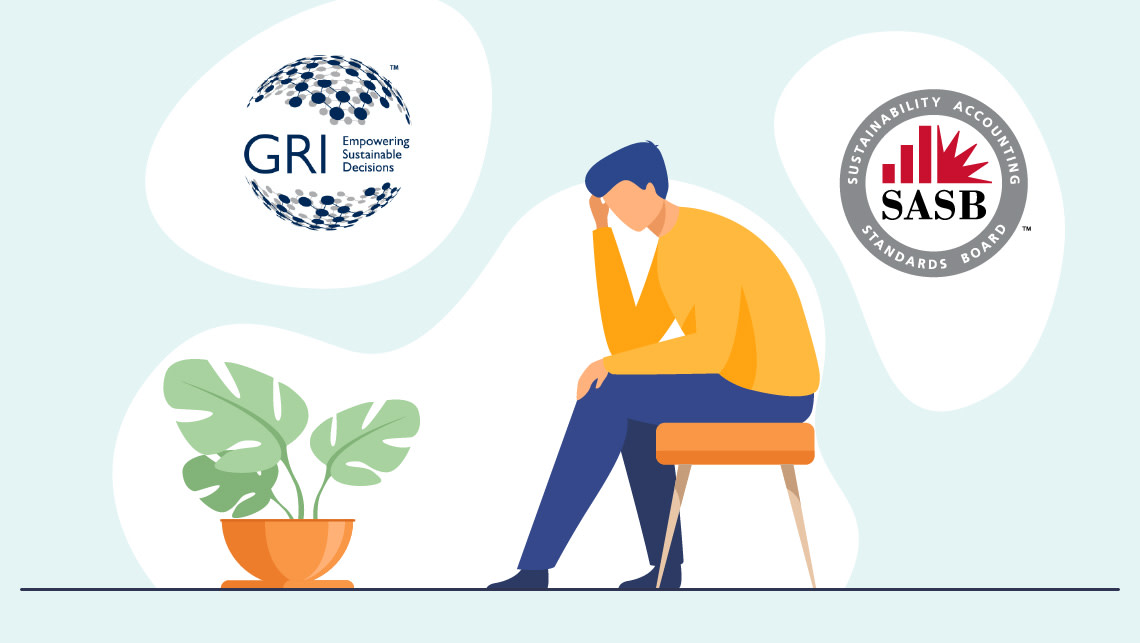SASB & GRI Sustainability Reports: Enhancing Company ESG Disclosures

Environmental, social, and governance (ESG) factors have become increasingly important in the corporate world as businesses and investors seek to align their strategies with sustainable practices. Two leading sustainability reporting frameworks, the Sustainability Accounting Standards Board (SASB) and the Global Reporting Initiative (GRI), provide companies with guidelines for disclosing material ESG information.
This article explores the features and benefits of SASB and GRI sustainability reports and how companies can use these frameworks to improve their ESG reporting.
What are SASB and GRI Sustainability Reports?
SASB and GRI are non-profit organisations that have developed globally recognised sustainability reporting frameworks, both of which aim to provide investors and stakeholders with transparent and decision-useful ESG information. While SASB focuses on industry-specific materiality, GRI emphasises a broader range of sustainability topics relevant to all industries.
Featured Article: The Top 3 Visible Benefits Of ESG Investing
Key Features of SASB and GRI Sustainability Reports
SASB Sustainability Reports:
Industry-Specific Standards: SASB has developed sustainability accounting standards for 77 industries, addressing the unique ESG risks and opportunities each industry faces.
Materiality Focus: The SASB framework emphasises material sustainability issues—those that are likely to have a significant impact on a company's financial performance and long-term value creation. Search for and compare companies or sectors via the SASB Materiality Finder.
Quantitative Metrics: SASB standards include quantitative metrics, offering a more objective way to measure and compare a company's ESG performance over time and against industry peers.
GRI Sustainability Reports:
Universal Standards: GRI offers a set of universal standards applicable to all organisations, regardless of size, sector, or geographic location. Access via language here.
Comprehensive ESG Topics: GRI standards cover a wide range of sustainability topics, including environmental, social, economic, and governance issues.
Stakeholder Engagement: GRI emphasises the importance of stakeholder engagement in determining material sustainability issues and ensuring a company's reporting is relevant and responsive to stakeholder needs.
Benefits of SASB and GRI Sustainability Reports for Companies
Enhanced Transparency: Adopting SASB and GRI frameworks can improve the transparency of a company's ESG disclosure, allowing stakeholders to better understand its sustainability performance and risks.
Improved Comparability: These reporting frameworks facilitate comparisons between companies within the same industry or across industries, enabling investors to make more informed investment decisions based on ESG factors.
Better Risk Management: Companies using SASB and GRI standards can identify, measure, and manage material sustainability risks more effectively, leading to better long-term performance and resilience.
Increased Investor Confidence: Transparent and comparable ESG disclosure through SASB and GRI sustainability reports can help companies build trust with investors and attract capital from those focused on sustainable investing.
Streamlined Reporting: Adopting SASB and GRI standards can streamline a company's sustainability reporting process, making it easier to meet multiple reporting requirements and comply with evolving regulations.
Integrating SASB and GRI Sustainability Reports
While SASB and GRI frameworks serve different purposes, companies can integrate both into their sustainability reporting to provide a comprehensive and decision-useful view of their ESG performance. By combining SASB's industry-specific materiality focus with GRI's broader sustainability coverage, companies can create a holistic sustainability report that addresses the needs of various stakeholders, including investors, regulators, and customers.
In conclusion, SASB and GRI sustainability reports offer companies valuable tools for disclosing material.
Featured Article: How Can An ESG Reporting & Rating Framework Help Investors Achieve Their Financial Goals? (Updated)

